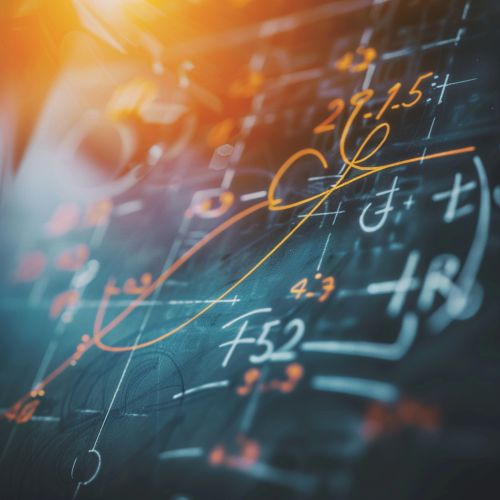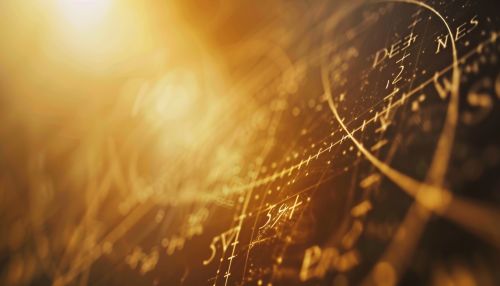Derivation
Introduction
Derivation, in its most general sense, refers to the process of obtaining something from a source or origin. In the context of mathematics, derivation is a fundamental concept in calculus and differential equations. It is a procedure used to find the derivative of a function. The derivative of a function at a chosen input value describes the function's rate of change at that point. This article delves into the concept of derivation, its principles, applications, and the various methods used to derive functions.


Principles of Derivation
Derivation operates on the principle of limits in calculus. It is based on the concept of a limit, which is a fundamental idea in calculus. The derivative of a function at a particular point is defined as the limit of the difference quotient of the function at that point. This limit, if it exists, gives the slope of the tangent line to the function at the given point.
Difference Quotient
The difference quotient of a function is an expression that represents the average rate of change of the function over an interval. It is defined as the ratio of the difference in the function's values at two points to the difference in the input values at these two points.
Limit of the Difference Quotient
The limit of the difference quotient as the interval approaches zero gives the instantaneous rate of change of the function at a point, which is the derivative of the function at that point.
Methods of Derivation
There are several methods used in calculus to derive functions. These methods are based on rules and formulas that have been developed to simplify the process of finding derivatives.
Power Rule
The power rule is a basic theorem in calculus used to derive functions that are power functions. It states that the derivative of a function of the form f(x) = x^n, where n is a real number, is f'(x) = nx^(n-1).
Product Rule
The product rule is used to derive the product of two functions. It states that the derivative of the product of two functions is the derivative of the first function times the second function plus the first function times the derivative of the second function.
Quotient Rule
The quotient rule is used to derive the quotient of two functions. It states that the derivative of the quotient of two functions is the denominator times the derivative of the numerator minus the numerator times the derivative of the denominator, all divided by the square of the denominator.
Chain Rule
The chain rule is used to derive the composition of two or more functions. It states that the derivative of a composite function is the derivative of the outer function evaluated at the inner function times the derivative of the inner function.
Applications of Derivation
Derivation has numerous applications in various fields of science and engineering. It is used to solve problems involving rates of change and motion, optimization problems, and to compute slopes and tangents to curves, among other things.
Physics
In physics, derivation is used to describe the motion of objects. The concepts of velocity and acceleration, which are fundamental in physics, are derivatives of the position function with respect to time.
Economics
In economics, derivatives are used to analyze and predict changes in economic variables. They are used to find marginal cost, marginal revenue, and marginal profit, which are all key concepts in economics.
Engineering
In engineering, derivation is used in the design and analysis of systems and structures. It is used to model and predict the behavior of systems and to optimize their performance.
